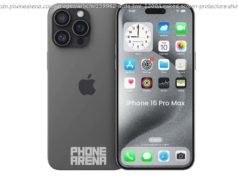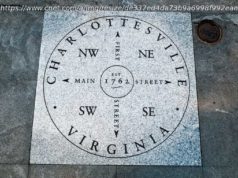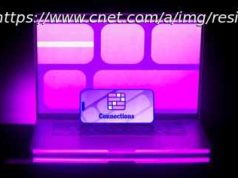CES 2019 will bring us foldables, rollables, transparent TVs and a whole lot of Alexa – here’s your complete primer.
CES 2019 is a mere 12 hours from officially kicking off on the morning of Tuesday January 8, and the TechRadar team has already been covering the show live for two days now. Even though it starts tomorrow, we’ve seen a major keynotes from Intel, LG, Samsung, Sony and others, drenching us in a steady stream of big, exciting announcements.
After the deluge of news, we’ll be hitting the show floor sopping wet, trying to wring out the very best, most innovative and yes, even the strangest, products at the show. It’s exhausting work, but there’s no place like Vegas during CES.
What can you expect to see at this year’s show? We’ve got all the details, predictions and postulations for what you can expect to see at CES 2019.
Update: What have we seen so far? We’ve started into the future of HTC’s next VR headset, seen a 98-inch 8K Samsung TV too large for words and Intel finally showed off its 10nm processors .
The 2019 International CES will begin on Tuesday, 8 January and end on Friday, 11 January. It’s been taking place since 1967 and is staged by the Consumer Technology Association (CTA), a trade organization that represents over 2,000 consumer tech companies in the U. S.
Though it gets a lot of attention from the world’s media, this is not an event where the public can go see the latest tech. Unlike the IFA exhibition in Berlin each August, the CES is open only to the electronics trade, as well as journalists, bloggers and plenty of blaggers. (You know who you are…)
How big exactly is CES? It’s huge. If you’re going for the first time, go on a few five-mile walks in the preceding weeks. Seriously, it’s hiking boots-big. There are 2.75 million net square feet of exhibit space. Eleven venues. 24 product categories. Some company’s booths are vast and complex, while other, smaller firms grab a table in one of the 25 marketplaces.
In terms of footfall, the CES attracts about 180,000 people from 155 countries, as well as 6,500 media, who visit 4,500 exhibiting companies. All the biggest tech companies in the world gather… well, except for Apple.
Since 1978 the CES has been staged in Las Vegas. Why? Hotel rooms, all 150,000 of them, and counting. The main venue is the Las Vegas Convention and World Trade Center (LVCC), which is a short (and very busy) monorail ride from The Strip, where most of the hotels are.
Along with the nearby Westgate Las Vegas and Renaissance Las Vegas, this is referred to as Tech East. This is where most of the major booths are. Tech West (comprising the Sands Expo, The Venetian, The Palazzo, Wynn Las Vegas, and Encore) is where you’ll find hi-fi and audio.
At Tech South (ARIA, Park MGM/Park Theater and Vdara) you’ll see VR, AR, and gaming. There are shuttle buses between the venues, but it’s best to stay put for the day at one of the three areas to avoid the traffic.
Although the weeks before the CES are packed with rumors and reports of what may or may not be launched or announced at the CES, it’s not until Sunday, January 6 and Monday, January 7 – the two days before the show opens – that there will be any concrete news. These are the two media days, and they’re when the all-important press conferences are held, and consequently when a lot of the headlines are written.
Sunday is typically light on news, and in 2019 it’s Monday that will see the big companies’ press conferences at the Mandalay Bay Hotel at the south end of The Strip. In 2019, confirmed press conferences include Hisense, Hyundai, Intel, LG, Panasonic, Qualcomm, Samsung, Sony, TCL, and Toyota.
As for whom is actually giving these nail-biting presentations, the first will come from LG on Monday, 7 January; its President and Chief Technology Officer Dr. I. P. Park will discuss AI and ‘self-evolving’ products… and a foldable phone?
January 8 will see keynotes from IBM Chairman, President and CEO Ginni Rometty (trust, AI and quantum) and Verizon CEO Hans Vestberg (5G), while January 9 has AMD’s president and CEO Dr. Lisa Su discuss next-gen computing.
CES has barely begun but we’ve already seen some truly amazing technology on show at CES 2019. You can find individual break downs further down the page, but here are the biggest news stories and most interesting products we’ve seen so far.
The wait is finally over, Intel has finally announced its first, real 10nm processors and has shown them working on stage. What’s more Intel announced multiple series of 10nm chips on the way with Ice Lake, LakeField and Cascade Lake server chips.
If you thought the best 4K TVs were massive, Samsung has upped the ante with an immense 98-inch Q900 QLED 8K TV. It’s basically more screen than your eyes can handle.
HTC is speeding along to its next headset and its shooting for the starts with its newly announced Cosmos headset. The headset maker claims it’s next device will be lighter, easier to setup and require no external tracking software. We had our first look into the HTC Cosmos, but it’ll be months before HTC will share more about its form factor and functions so this one won’t be coming any time soon.
In the more immediate future, HTC also announced the Vive Pro Eye, which features eye-tracking technology, and Viveport Infinity games pass subscription service that’s basically Netflix for VR.
The new Lovot robot from Groove X has been spotted at CES, and it’s a seriously cute robotic companion with big cartoon eyes and teddy bear-soft exterior.
Groove X says that Lovot is designed to “nurture people’s capacity to love” by demanding the affection of its owner. It’s certainly very cute, but it might cost a huge amount as well, with a pair of the robots available for preorder for 598,000 yen, which works out at around $5,520/£4,320/AU$7,750.
At CES 2019, McAfee announced the launch of new Secure Home Platform voice commands for Google Assistant, which will enable you to keep track of your whole network without fiddling with software and app interfaces.
Secure Home Platform will come built into routers and gateways, and will let you perform security checks using spoken commands.
Asus has announced its new ultra-thin ROG Zephyrus S GX70 gaming laptop, which comes with brand-new Nvidia GeForce RTX with Max-Q design graphics. Configurable up to an RTX 2080 with Max-Q Design and 8GB of GDDR6 VRAM, Nvidia’s new laptop graphics combine the power of its high-end RTX 2080 graphics card with a slim design that allows it to be installed in thin gaming laptops.
The ROG Zephyrus S GX701 also comes with an 8th generation Intel Core i7-8750H six-core processor with a turbo clock speed of 4.1GHz. It can also be fitted with up to 24GB of DDR4-2666 RAM.
Asus also showed off its innovative Mothership GZ700 gaming laptop, which comes with a completely new and unique form factor that allows it to house some seriously impressive tech inside.
Huawei announced the new MateBook 13, a 13-inch Ultrabook at CES 2019, which features 8th-generation Whiskey Lake, full-power processors, 8GB of RAM and up to 512GB of RAM, with an optional Nvidia GeForce MX150 GPU. This all powers a 13.3-inch 2K (2,160 x 1,440) touch display.
Best of all, the MateBook 13 will continue Huawei’s tradition of releasing powerful tech in stylish Apple-like designs for a lot less money than the competition. The laptop will be available later in January for $999 (about £780, AU$1,410) for the Mystic Silver Core i5-8265U model. Users can opt for the Space Gray Intel Core i7-8565U MateBook 13, with Nvidia MX150 graphics for $1,299 (about £1,025, AU$1,830).
Asus has announced the followup to its popular Chromebook, the Asus Chromebook Flip C434.
Its screen has had a massive upgrade, with a new NanoEdge display technology that crams a 14-inch Full HD (1,920 x 1,080) display into a 13-inch laptop.
It also features 8th-generation Intel Amber Lake fan-less processors, up to 8GB of RAM and 128GB of storage. With the lightweight nature of Chrome OS, this hardware will let you get some serious work done.
We got to check out a new Apple HomeKit-compatible LED light strip, the Eve Light Strip, which has debuted at CES 2019 this week, and it’s a bit brighter than our old favorite, the Philips Hue LightStrip Plus.
The Eve Light Strip is a 2m long bendable strip of LED lights. It’s $79 (other region pricing coming soon) and comes with adhesive on the back so you can attach to your various parts of home for extra flair.
Arlo (the Netgear-owned smart camera manufacturer) has announced a new DIY security system at CES 2019 that will keep your home safe from pretty much any threat you can think of.
The Arlo Security System features an all-in-one Multi-Sensor that detects windows and doors opening and closing, motion, smoke, carbon monoxide, water leaks, temperature changes and more
Blackberry has announced that it will license its Blackberry Secure technology to smart device manufacturers, in a bid to make smart speakers like Google Home and Amazon Echo, more secure.
Want a powerhouse gaming laptop you can slip into your rucksack? The Samsung Notebook Odyssey hopes to do just that, with a slim 19.9mm chassis (weighing 2.36kg) that still packs a 144Hz refresh rate, Full HD resolution, 8th-generation Intel Core i7 six-core processor, and GeForce RTX 2080 graphics card.






